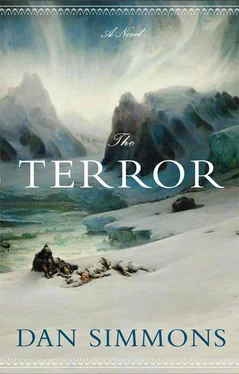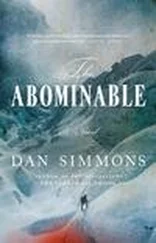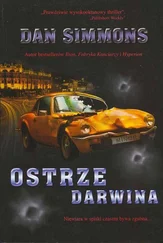Crozier walked through his days wondering if he was one of those skeletons.
But the worst dream, by far, was the Communion dream in which he was a boy or a sicker, older version of himself and was kneeling naked at the altar rail in Memo Moira’s forbidden church while the huge, inhuman priest – dripping water in shredded white vestments through which showed the raw, red flesh of a badly burned man – loomed over him and leaned closer, breathing carrion breath into Crozier’s uplifted face.
The men all rose in the dark a little after 5:00 a.m. on the morning of 23 April. The sun would not rise until almost 10:00 a.m. The wind continued to blow, flapping the brown canvas of the Holland tents and stinging their eyes as they huddled to eat breakfast.
On the ice, the men were supposed to heat their food thoroughly in small tins labeled “Cooking Apparatus (1),” using their small spirit stoves fueled by pints of ether carried in bottles. Even without wind, it was often difficult or nearly impossible to get the spirit stoves primed and started; in a wind like that morning’s, it was simply not possible, even when taking the risk of firing up the spirit stoves inside the tents. So – reassuring themselves that Goldner’s canned meats and vegetables and soups had already been cooked – the men just spooned the frozen or near-frozen masses of congealed glop straight out of the cans. They were starving and had an endless day of man-hauling ahead of them.
Goodsir – and the three dead surgeons before Goodsir – had talked to Crozier and Fitzjames about the importance of heating Goldner’s tinned foodstuffs, especially the soup. The vegetables and meats, Goodsir had pointed out, had indeed been precooked, but the soups – mostly cheap parsnips and carrots and other root vegetables – were “concentrated,” meant to be diluted with water and brought to a boil.
The surgeon could not name the poisons that could be lurking in unboiled Goldner soups – and perhaps even in the meats and vegetables – but he kept reiterating the need for full heating of the tinned foods, even while on the march on the ice. These warnings were one of the main reasons Crozier and Fitzjames had ordered the heavy iron whaleboat stoves transported to Terror Camp over the ice and pressure ridges.
But there were no stoves here at Sea Camp One or at Sea Camp Two the next night. The men ate all the tinned foods cold from the can when the spirit stoves failed – and even when the ether of the little stoves lighted, there was just enough fuel to melt the frozen soups, not bring them to a boil.
That would have to suffice, thought Crozier.
As soon as breakfast was finished, the captain’s belly began rumbling with hunger again.
The plan had been to fold up the eight Holland tents at both sea camps and haul them to Terror Camp on the sledges, to serve as backup should the groups have to go out on the ice again soon. But the wind was too high and the men were too weary even after just one day and night on the ice this trip. Crozier conferred with Lieutenant Little and they decided that three tents would be enough to bring along from this camp. Perhaps they would do better the next morning after Sea Camp Two.
Three men in harness broke down that second day on the ice on 23 April 1848. One began vomiting blood onto the ice. The other two simply fell in their tracks and were unable to pull for the rest of that day. One of those two had to be set onto a sledge and hauled.
Not wanting to reduce the number of armed pickets walking behind, ahead, and to the sides of the procession of sledges, Crozier and Little tied on harnesses and man-hauled for most of that endless day.
The pressure ridges weren’t as high during this middle day of the crossing and the previous sledge tracks had left a virtual highway on this stretch of open sea ice, but the wind and blowing snow eliminated almost all of these advantages. Men pulling a sledge could not see the next sledge fifteen feet in front of them. The Marines or sailors carrying weapons and walking along as guards could see no one else when they were twenty feet or more from the sledges and had to walk within a yard or two of the sledge parties so as not to get lost. Their usefulness as lookouts was nil.
Several times during the day, the lead sledge – usually Crozier’s or Lieutenant Little’s – would lose the worn sledge track, and everyone would then have to stop for up to half an hour while some men unharnessed themselves, tied on a rope so as not to get lost in the howling snow, and walked left and right of the false route, seeking out the faint depressions of the actual track on a surface quickly being covered by inches of blowing snow.
To lose the route midway like this would cost not only time, it might well cost all of them their lives.
Some of the sledge teams hauling heavier loads this spring had done this nine miles of flat sea ice in under twelve hours, arriving at Sea Camp Two only hours after the sun had set. Crozier’s group arrived long after midnight and almost missed the camp completely. If Magnus Manson – whose keen hearing seemed as unusual as his size and low intelligence – had not heard the flapping of tents in the wind far to their port side, they would have marched past their shelter and food cache.
As it was, Sea Camp Two had been largely destroyed by the day’s incessant and rising winds. Five of the eight tents had been blown away into the darkness – even though they had been secured by deep ice screws – or simply torn to tatters. The exhausted and starving men managed to pitch two of the three tents they’d man-hauled from Sea Camp One, and forty-six men who would have been comfortable but crowded in eight tents squeezed into five.
For the men taking turns on watch that night – sixteen of the forty-six – the wind, snow, and cold were a living hell. Crozier stood one of the 2:00 a.m. to 4:00 a.m. watches. He preferred being able to move since his one-man sleeping bag would not allow him to get warm enough to sleep anyway, even with men stacked like cordwood around him in the flapping tent.
The final day on the ice was the worst.
The wind had stopped shortly before the men roused themselves at 5:00 a.m., but as in evil compensation for the gift of the blue skies to come, the temperature dropped at least thirty degrees. Lieutenant Little took the measurements that morning: the temperature at 6:00 a.m. was −64 degrees.
It’s only eight miles , Crozier kept telling himself that day as he pulled in harness. He knew that the other men were thinking the same thing. Only eight miles today, a full mile less than yesterday’s terrible haul . With more men dropping from sickness or exhaustion, Crozier ordered the accompanying guards to stow their rifles, muskets, and shotguns on the sledges and to tie on to the harnesses as soon as the sun rose. Every man who could walk would pull.
Lacking guards, they trusted in the clarity of the day. The brown blur of King William Land was visible as soon as the sun rose – the wall of high bergs and jostled coastal ice along its rim distressingly more visible, distantly gleaming in the thin, cold sunlight like a barrier of broken glass – but the clear light ensured they would not lose the old sledge tracks and that the thing on the ice could not sneak up on them.
But the thing was out there. They could see it – a small dot loping along to the southwest of them, moving much faster than they could haul. Or run, should it come to that.
Several times during the day, Crozier or Little would unstrap from harness, retrieve their telescopes from the sledges or their Male Bags, and look across the miles of ice at the creature.
It was at least two miles away and moving on all fours. From this distance, it might be just another white arctic bear of the kind they had shot and killed in such plentitude in the last three years. Until, that is, the thing took to its hind legs, rose up above the surrounding ice blocks and minibergs, and sniffed the air as it stared in their direction.
Читать дальше












